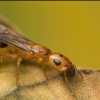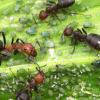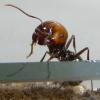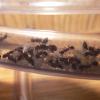I have noticed that there is a big controversy when identifying different Lasius species (especially for me), mainly Lasius niger and Lasius neoniger. I wanted to see if there is any way to differentiate between the two species. One of my main ways to identify them was when they have nuptial flights: Lasius niger has then in June-July and Lasius neoniger has them August-September but I do not think that is effective… I know that we can identify the difference between the two species by the teeth on their mandibles but is there any other way to roughly identify them without a more detailed analysis requiring a microscope? Like colour, hue, their behaviour, the hairs, how shiny their exoskeleton, differences in the queens, when they have their nuptial flight, etc… Or are the two species impossible to identify without microscope?
Edited by OwlThatLikesAnts, April 16 2025 - 11:31 AM.






















